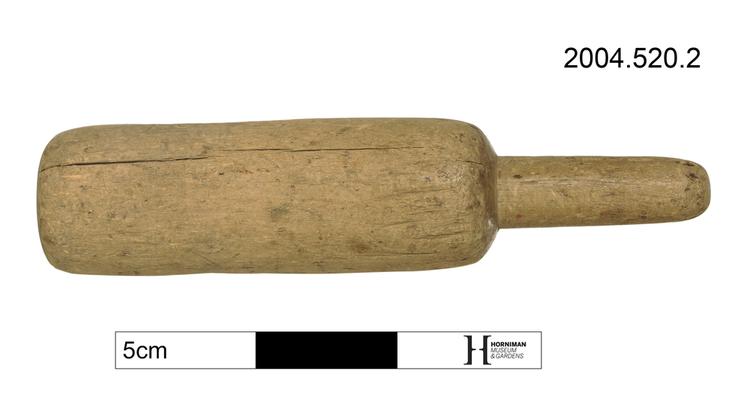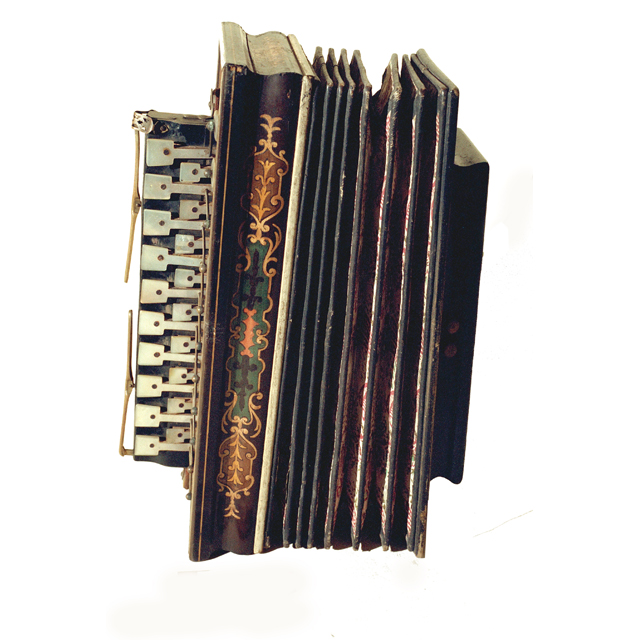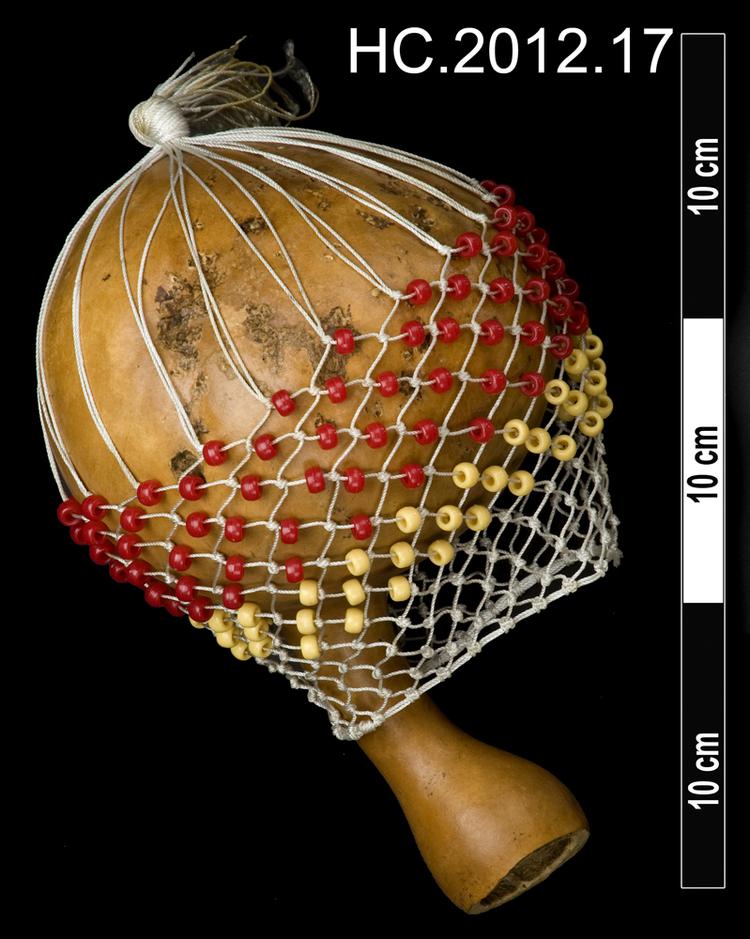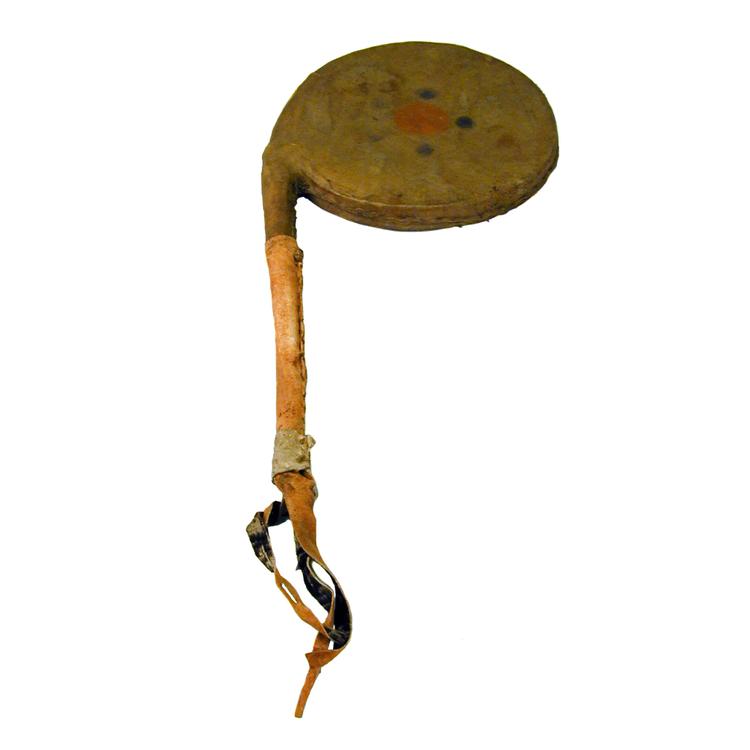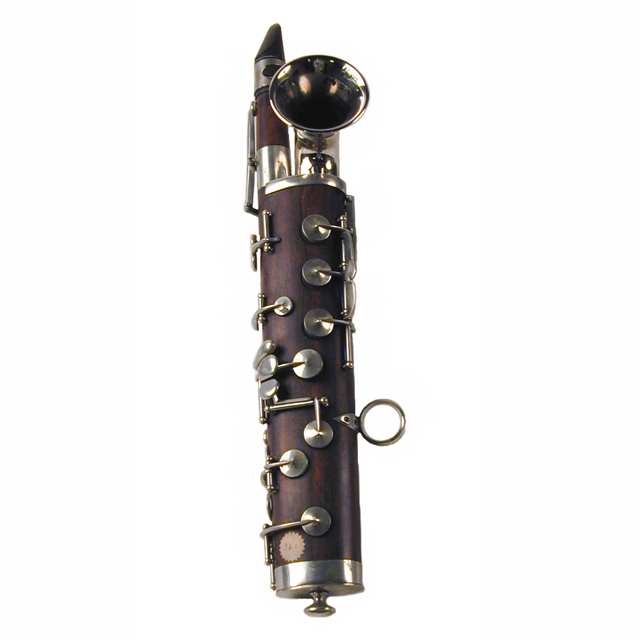
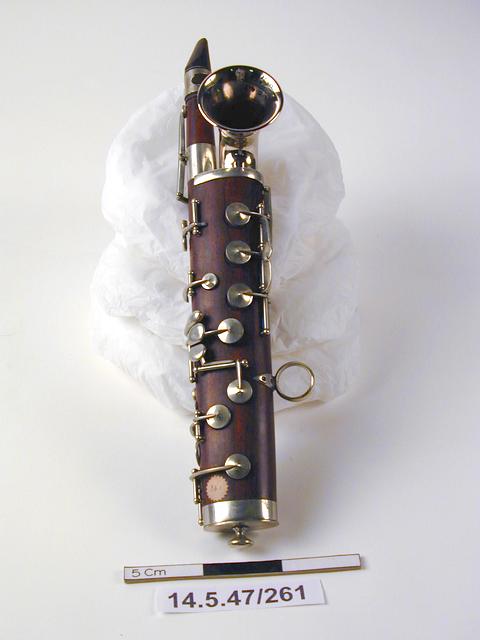
Octavin in C, dark brown wood, bleaching on face. Fifteen German silver keys (including rings and covered holes), of modern design. Original ebonite mouthpiece. Right angled German silver bell. Annular thumb rest. Double retractable stopper to butt (with knob). Length without mouthpiece is 39.5 cm. Length from butt to bell socket is 25.8 cm. Stamped: J.G. Doering Yokohama (marked DRGM 22115).
The octavin is a conical-bore woodwind instrument resembling the butt joint of a bassoon with a clarinet mouthpiece and a metal bell attached. Musical instrument collectors seem to have considered it an interesting historical curiosity, and the Boosey & Hawkes Collection contains an example, while the Adam Carse Collection contains two. However, its apparent inability to find a niche in any musical culture has made it the subject of derision for a number of commentators. Anthony Baines describes it as having been 'uselessly invented by Jehring and Adler, Markneukirchen, 1894.' Lyndsay Langwill writes: 'The octavin, which attained no popularity, has a tone somewhat like that of the soprano saxophone but less pleasant', while Adam Carse laments that 'It is difficult to say exactly what was the purpose for which this quaint little instrument was intended; there is nothing to show that it was anything but still-born in Europe, although it may have found some appreciation in America. Most musical dictionaries ignore the octavin, and few musicians are aware that it ever existed.'



